Inside a German World War I submarine
Categories: History
By Pictolic https://pictolic.com/article/inside-a-german-world-war-i-submarine.htmlDuring World War I, Germany used a fleet of 351 submarines to wage submarine warfare against Allied forces.
Faced with a naval blockade by the British, the Germans responded by declaring the waters around the British Isles a war zone on February 4, 1915.
And although their submarines had rather limited success in the fight against high-speed British warships, merchant and passenger ships cruising in the war zone were excellent targets for torpedoes. The loss of passenger ships, such as the transatlantic liner Lusitania, eventually forced the United States to enter the war on the side of the Allies.
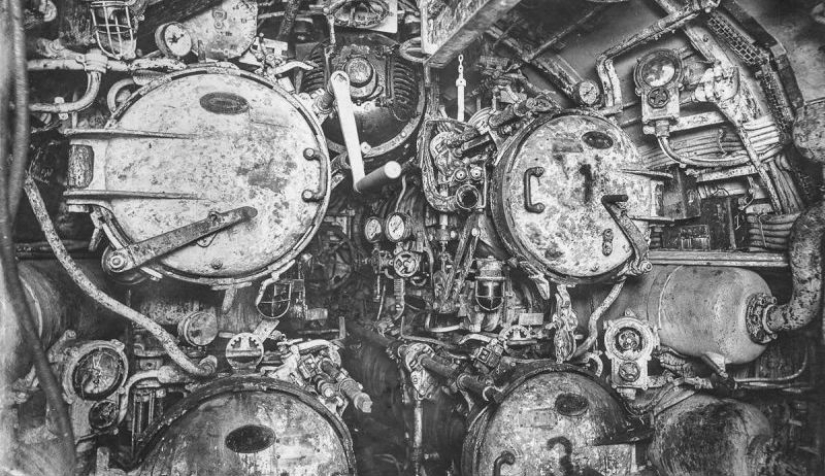

1. On July 19, 1918, the twin-screw submarine U-boat 110 pursued a merchant ship in the North Sea near the city of Hartlepool and was attacked by the ships of the convoy. When, due to damage from the explosions of Allied depth charges, the boat was forced to surface, it was rammed by the British destroyer H.M.S. Garry.
After the ramming, the boat sank, but in the same year it was raised from the bottom and put into dry dock at the Swan Hunter Wigham Richardson Ltd. shipyard in England for subsequent restoration.
These photographs of her unusually cramped and equipment-filled compartments were taken before the Armistice on November 11, 1918. In peacetime, the restoration of the boat did not make sense, and she was written off for scrap.

2. The central post on the stern from the starboard side. The picture shows a hatch into the well of the periscope and various valves for diving and surfacing.

3. UB-110 in dry dock.
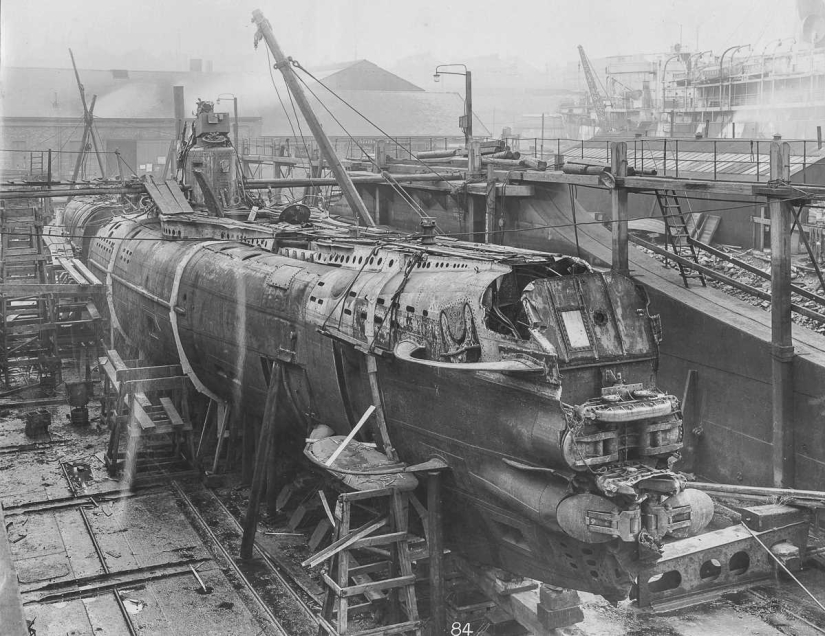
4.
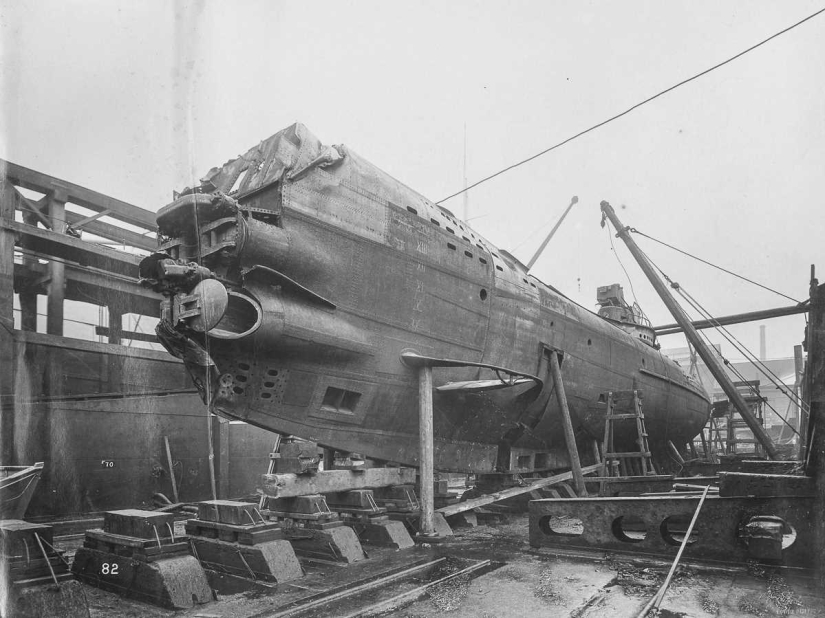
5. Electric control panel.
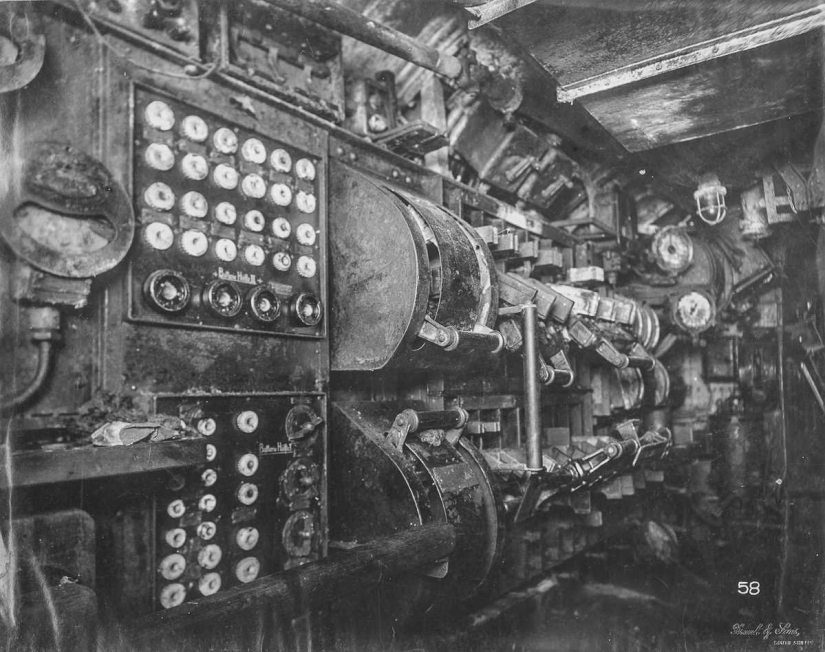
6. Electric control panel.
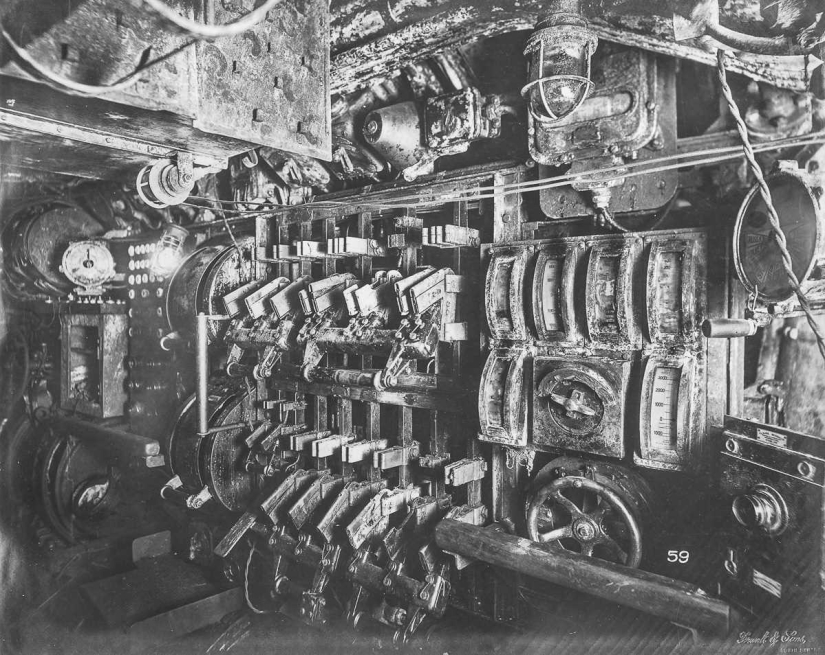
7. Aft torpedo compartment.

8. Engine room.
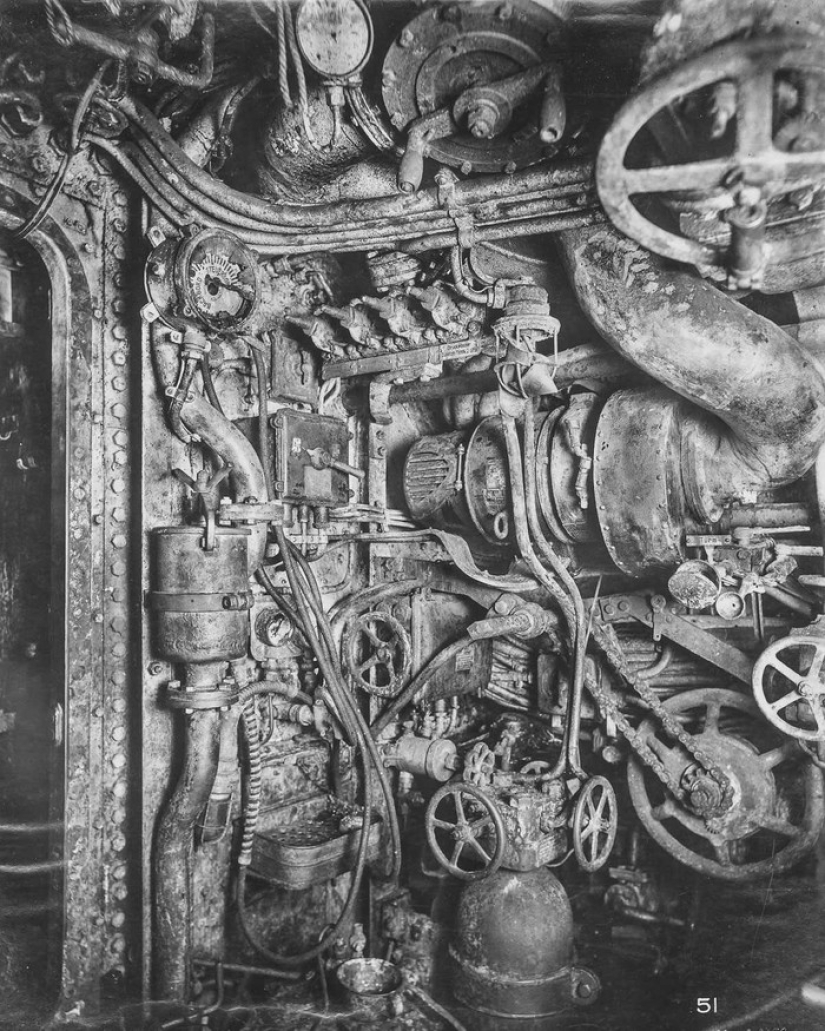
9. Electrical switchboard room.

10. Central post. The picture shows the steering wheel of the submarine's horizontal rudder, depth and fuel level indicators.
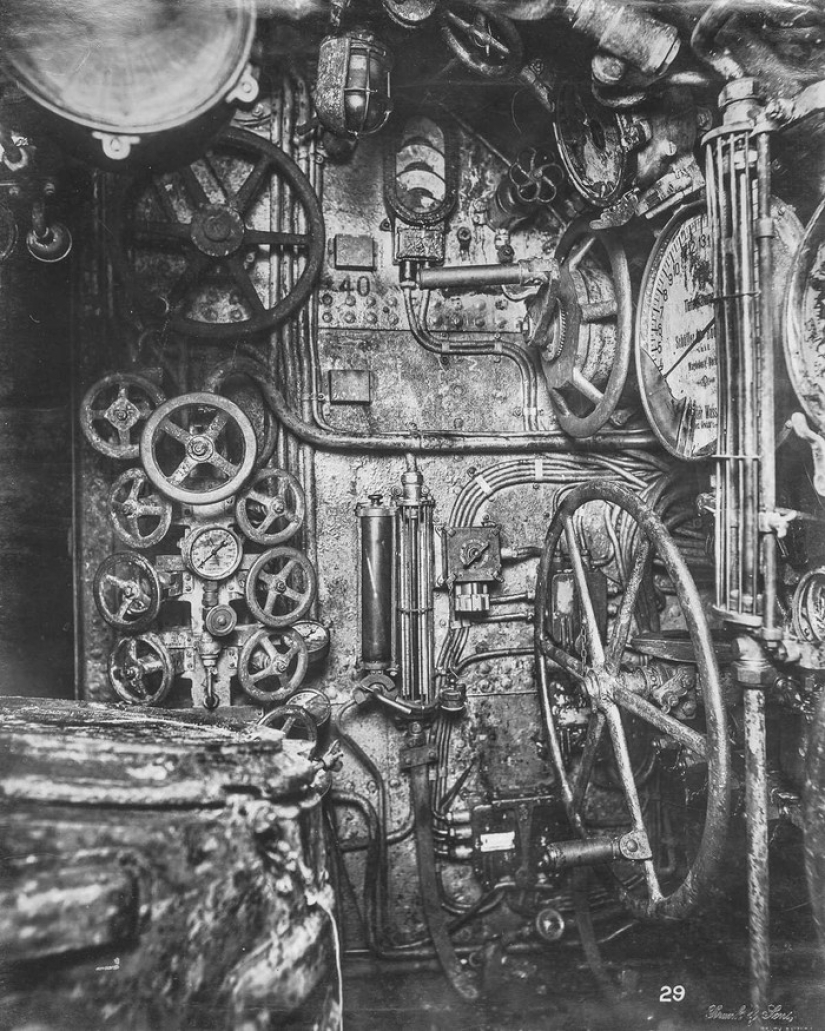
11. Table and lockers in the cabin.
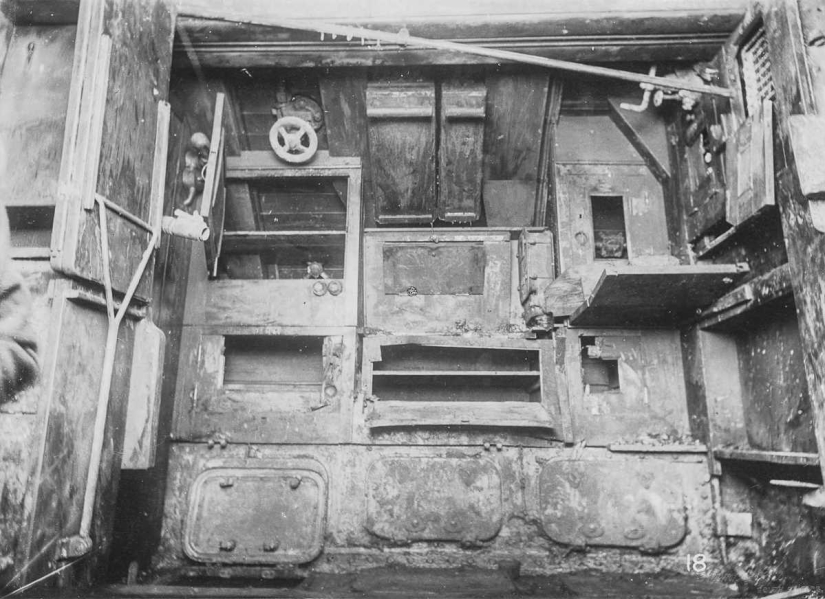
12. Compartment No. 3, crew lockers.
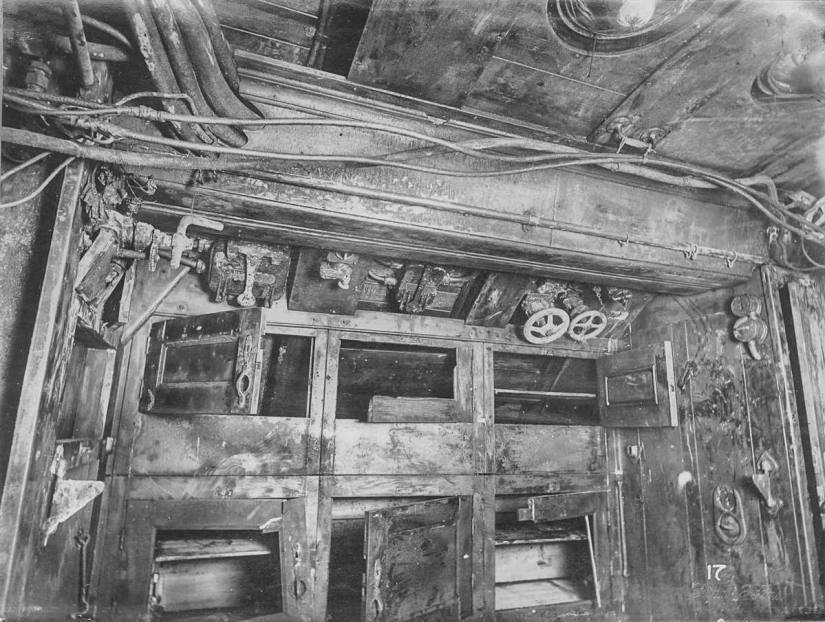
13. Bow torpedo compartment.

14. Pipes of four torpedo tubes.

15. View of the torpedo compartment from the stern. A crane beam for lifting torpedoes is visible at the top.
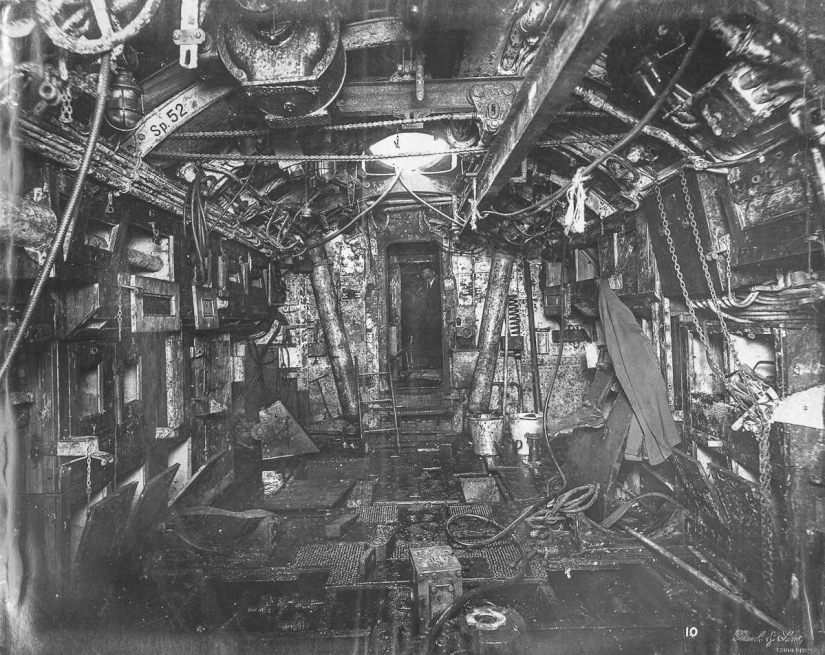
16. Electric control panel, view of the engine room and aft torpedo compartment.
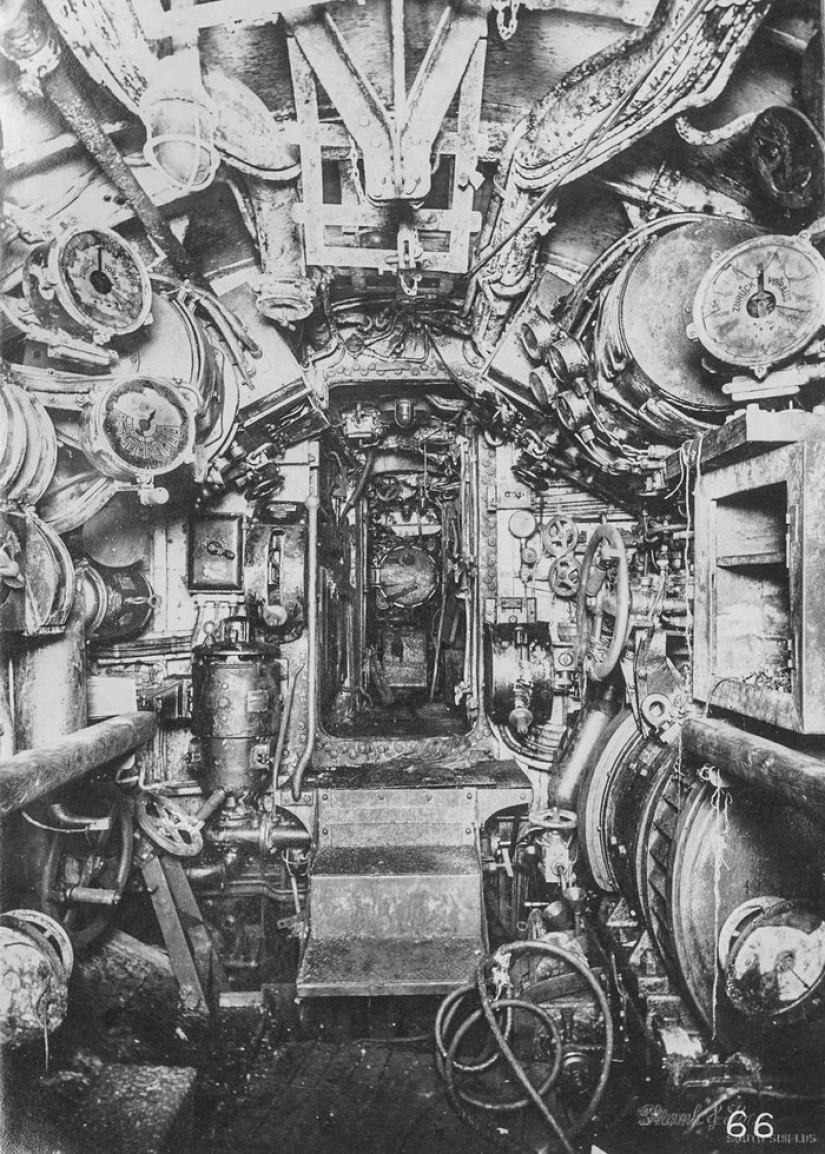
17. Crew cabin in compartment No. 6.
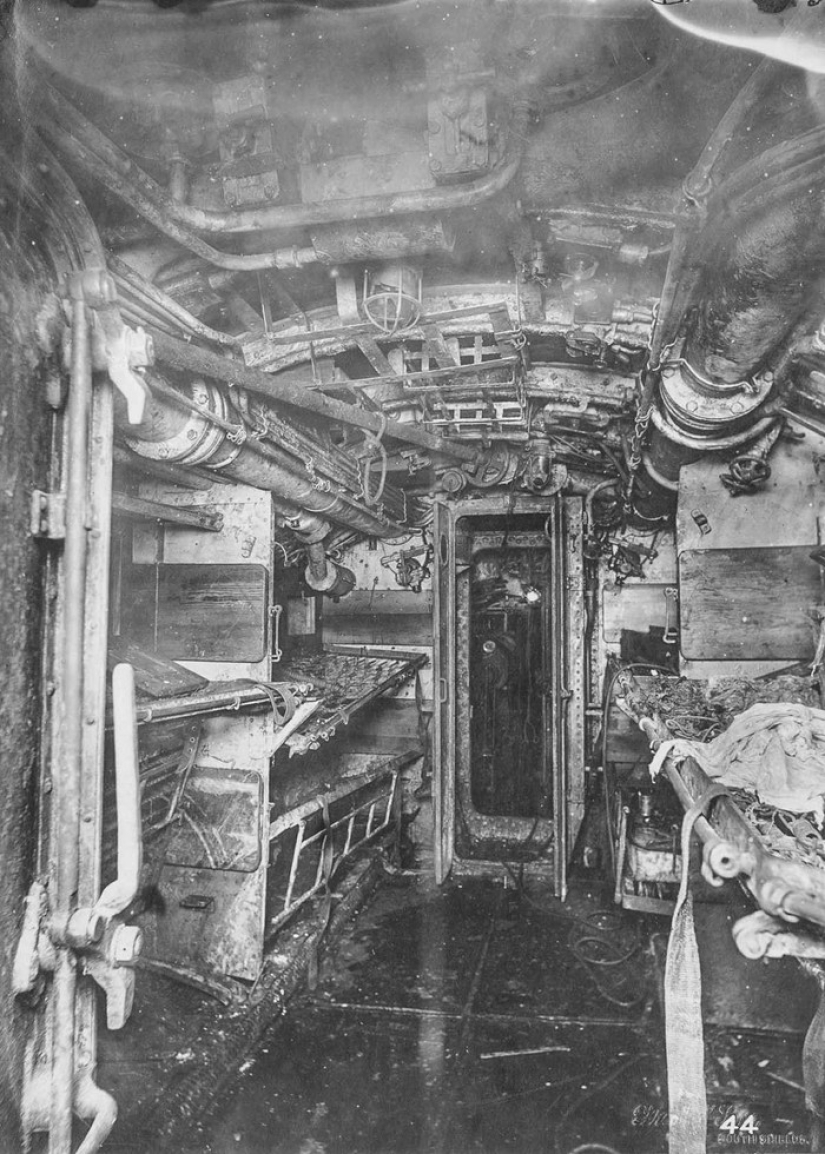
18. Compartment No. 5, starboard.

19. Crew rest room.
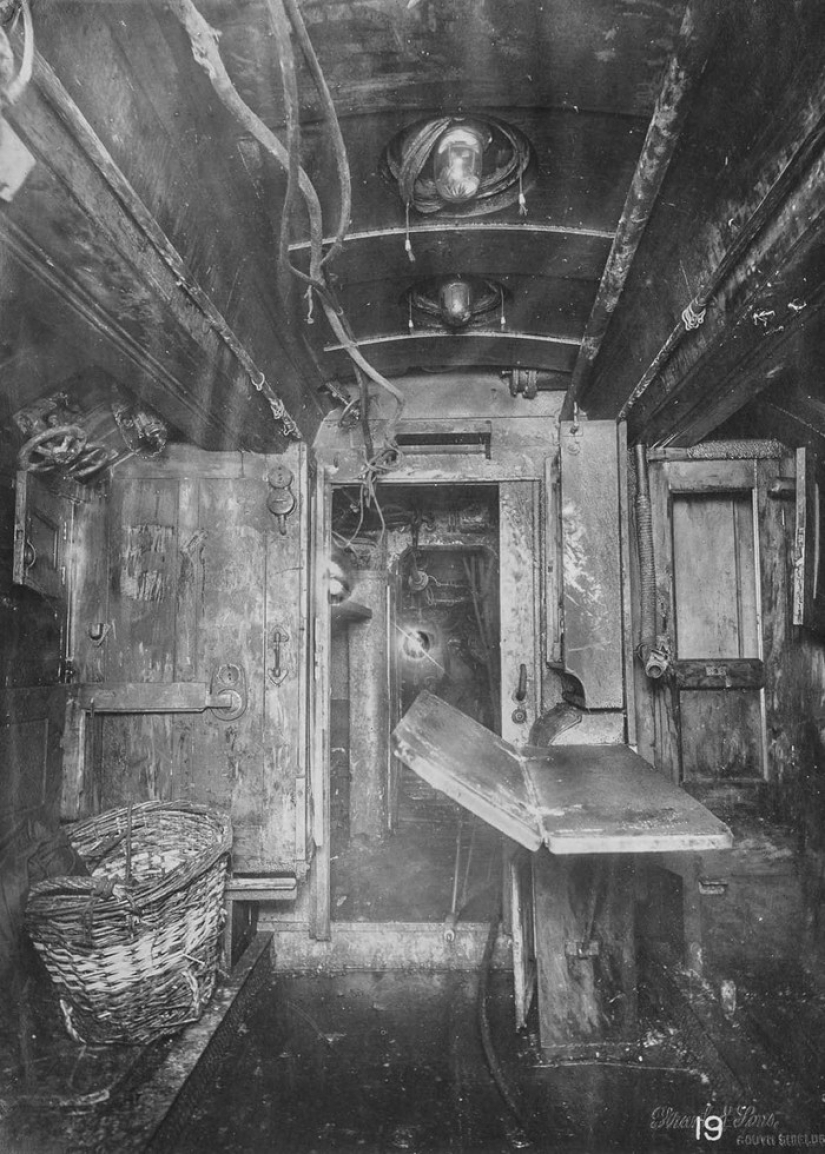
20. Central post. The picture shows the handles for lifting and lowering the periscope.
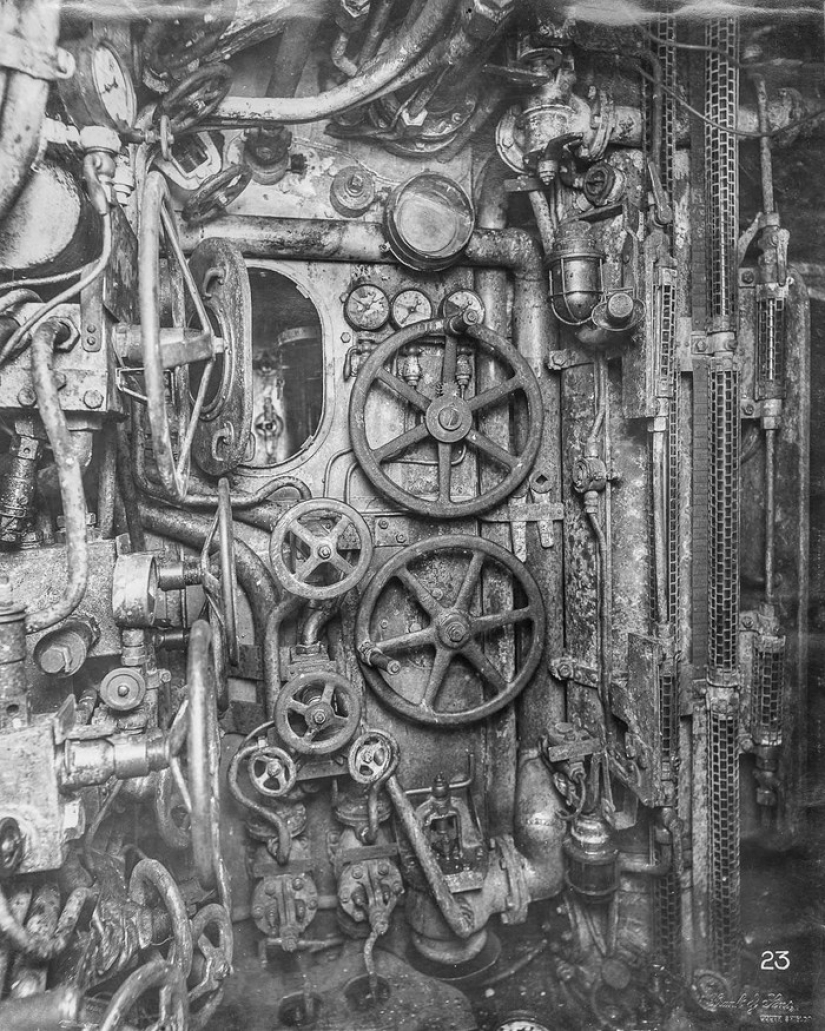
21. Central post. The picture shows a depth gauge, a machine telegraph, valves for diving and surfacing, as well as a steering wheel for controlling the horizontal rudder of a submarine.
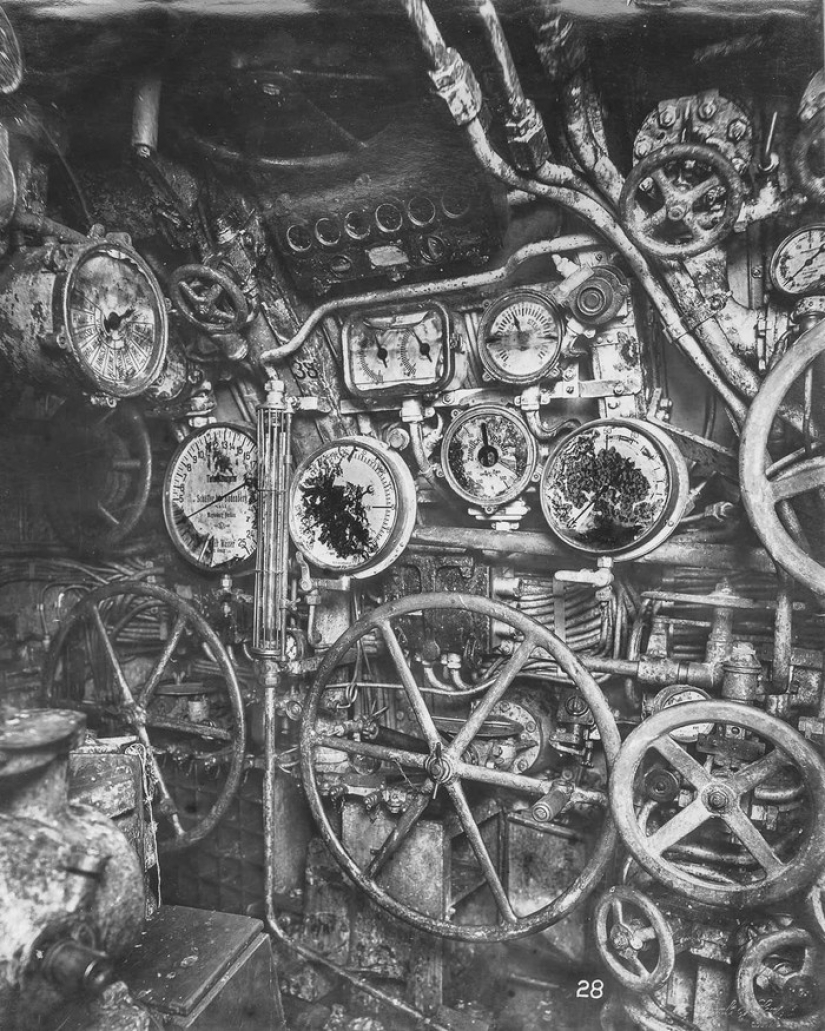
22. Central post. The picture shows the handles for controlling the temperature and air pressure.
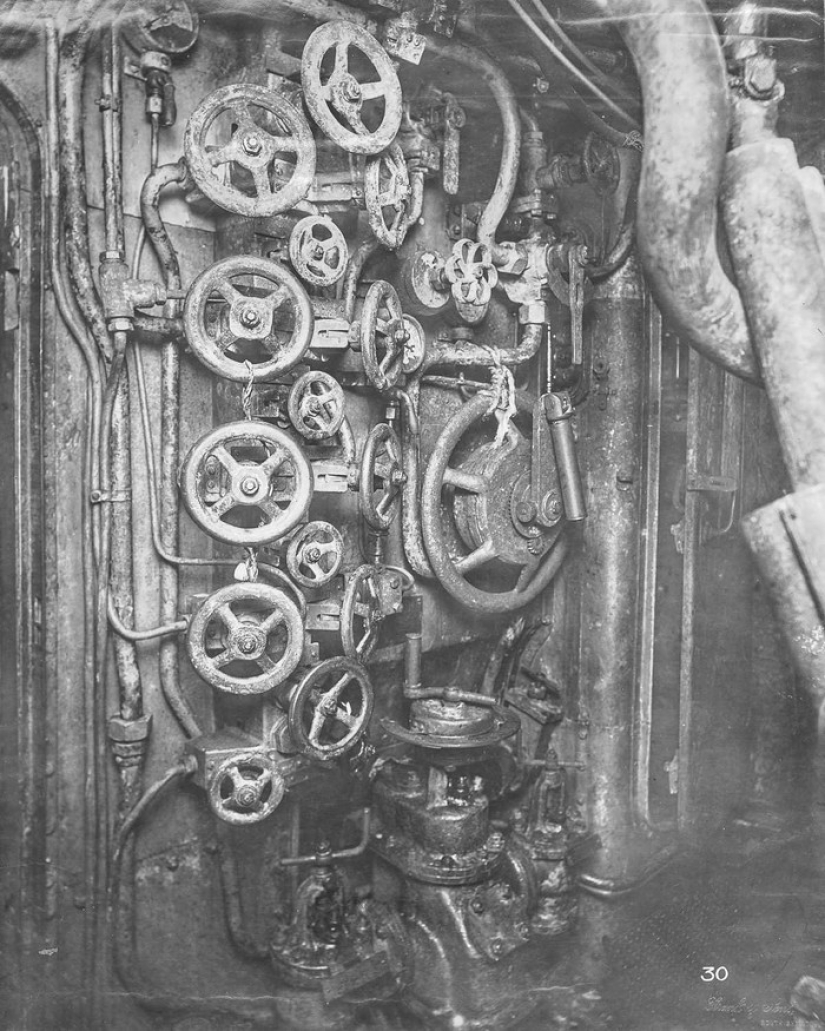
23. Bow torpedo compartment.
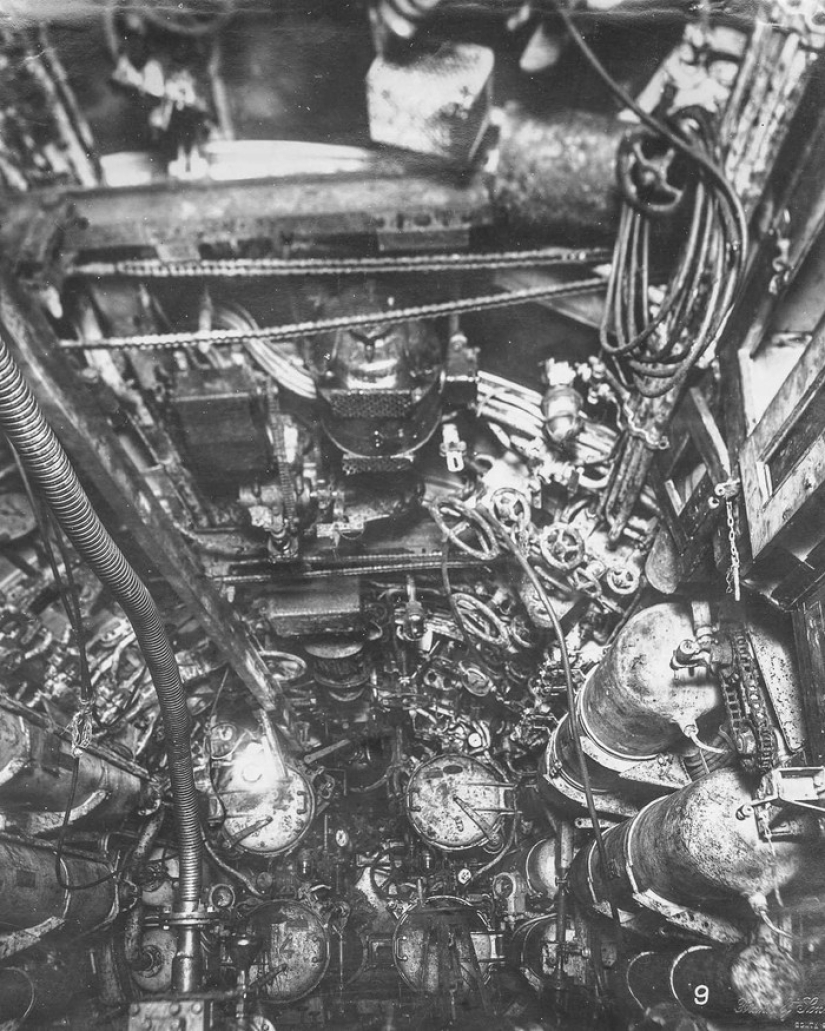
24. Central post. The picture shows a gyrocompass, a steering wheel, a machine telegraph and speaking tubes.
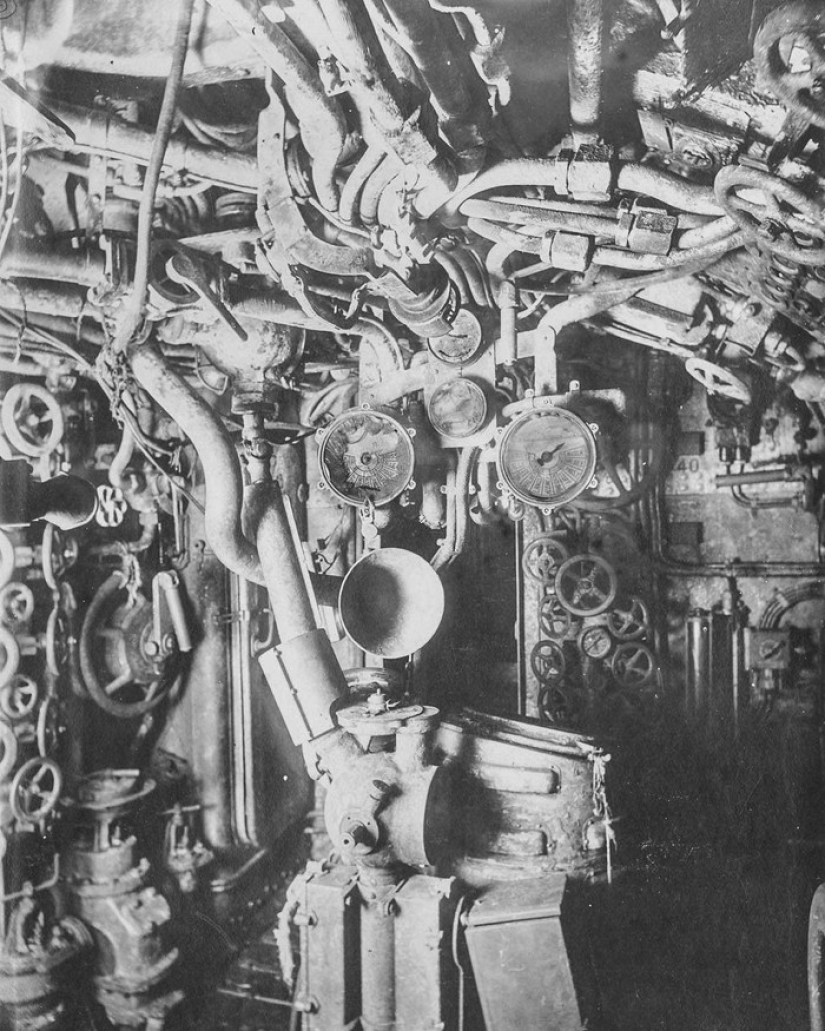
25. Diesel engine.
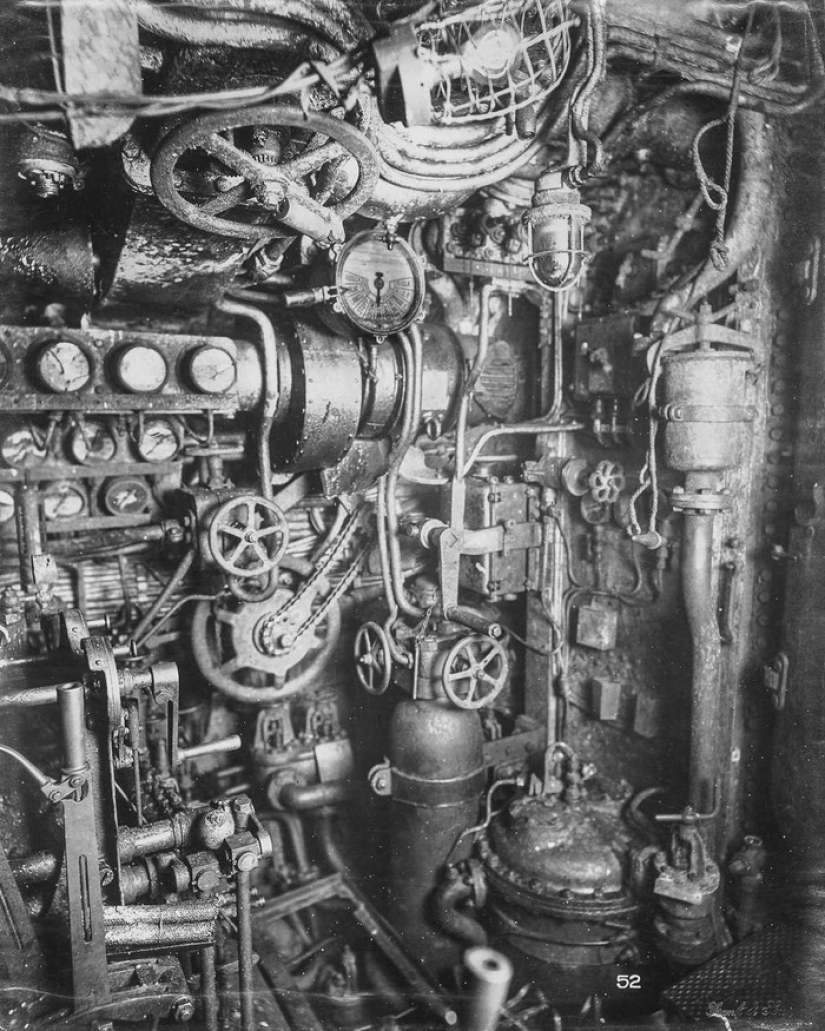
26.
Keywords: World War I | Submarine | Fleet | Flotilla
Post News ArticleRecent articles

Gloria Ramirez can be considered a very ordinary American. Her life was quite happy and unremarkable. Everything changed when she ...

John Poppleton is a photographer and artist who knows what beauty is firsthand. He creates it himself. Specializes mainly in ...
Related articles

More than a hundred years have passed since the end of the First World War. Many generations have passed since then. When you look ...

Arthur Mole is an English professional photographer who became famous thanks to a series of "live photos" taken during the First ...

With the beginning of sea voyages, the issue of food was a serious problem for European sailors. In the damp and stuffy ship's ...

Today, the white flag is perceived as a sign of surrender or a request for negotiations. But when and why did a simple white cloth ...